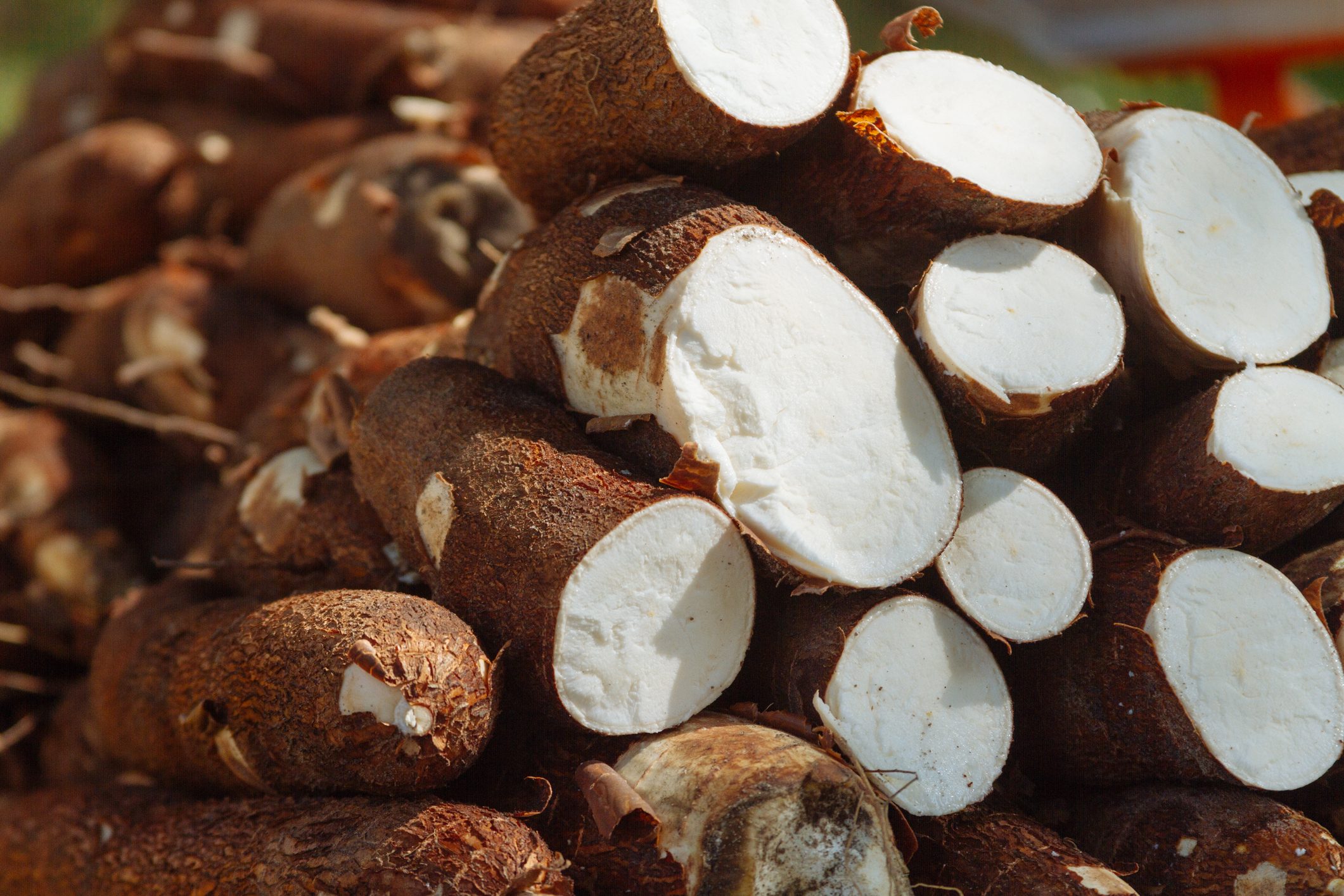12 facts you did not know about cassava
Cassava is a root vegetable that is longish in structure, brown in color, and tapers at two distant ends. It resembles sweet potato a lot in appearance and just like other popular starchy vegetables such as potatoes and sweet potatoes, cassava can also be prepared in many interesting ways.
;Resize,width=742;)
Cassava is a root vegetable that is quite popular in the African and South American continent. Here are some pretty interesting things about this starchy vegetable that you should know.
Cassava is a root vegetable that is longish in structure, brown in color, and tapers at two distant ends. It resembles sweet potato a lot in appearance and just like other popular starchy vegetables such as potatoes and sweet potatoes, cassava can also be prepared in many interesting ways.
To use cassava in the best way possible, it is important that you must know about this vegetable in greater details. By acquainting yourself with this tuber you would be in a far better position to prepare dishes that best suits your palate.
Cassava is known by many different names and is popular throughout the world. In Brazil, it is known as mandioca or aipim, in Thailand as singkong, in Africa as mogo, in the Philippines as kamoteng kahoy or balinghoy, or with other popular names such as Brazillian arrowroot, tapioca, and yuca in other parts of the world.

The leaves of this tuber with dark and thick exterior are pretty much edible and are large and green in color. The starchy part of cassava that we eat is grown under the ground.
It tends to spoil fast after the harvest and some cassava varieties go bad in mere few days post harvest. Due to this reason, cassava is sold in the UK after getting a wax coat to preserve it.
You may check the quality of cassava by trimming the ends off. Good cassava will be white inside and the spoilt one will be black.
Cassava should never be eaten raw as it contains harmful toxins that are concentrated on the outer layer of the cassava skin. You must peel it properly and remove the brown part before you turn it in to your preferred preparation.

The dried and ground cassava root is completely gluten free and can be used as an alternative to flour or as a thickening agent. In Brazil, cassava flour is mixed with water and forced through a sieve to prepare pancakes that are popularly sold as street food.

The starchy white pearls present in bubble tea are prepared by forcing moistened cassava flour through a sieve.
Peeled and sliced cassava becomes soft upon boiling. Dry out the soft cassava slices and deep fry them to prepare yummy cassava chips.
Tape or the fermented version of cassava is popularly used in Indonesia to make sweet preparations.
Cassava pie is a rich and traditional sweet in Bermuda that is served during Christmas time.

Gari is the soaked, grated, sundried, finely sieved, and dried version of cassava that resembles couscous and is prepared in Africa.
Chili Mogo, Pili Pili Mogo, Gari Foto, and fried cassava crisps are other popular African recipes that are prepared using cassava.
;Resize,width=767;)
;Resize,width=712;)
;Resize,width=712;)
;Resize,width=712;)
